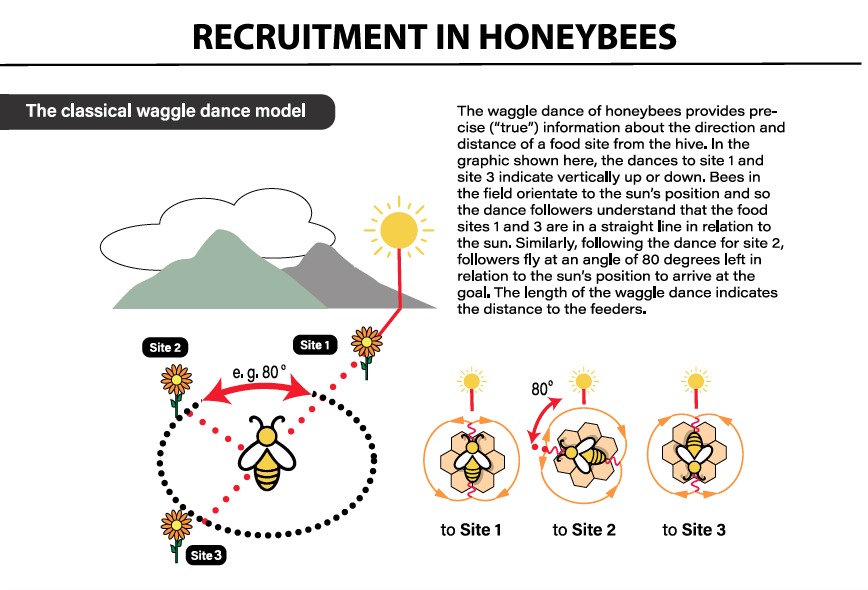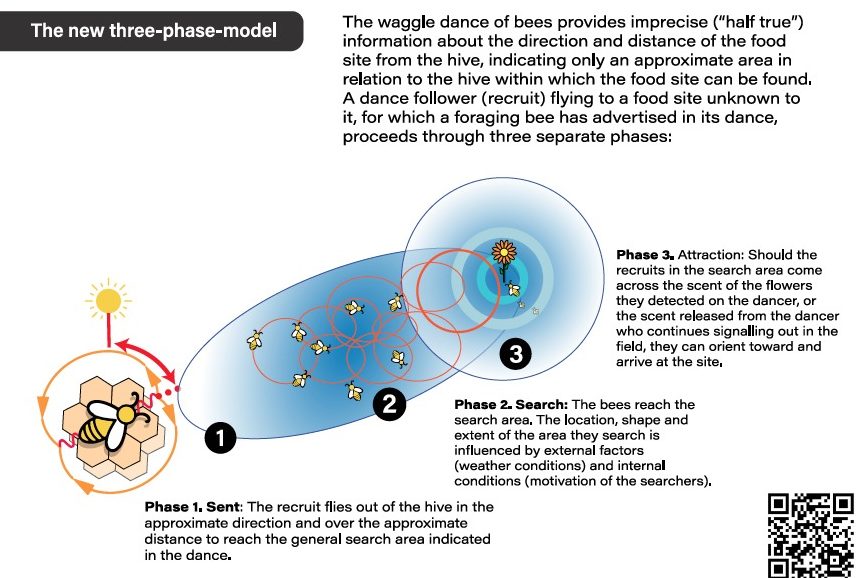Item Link: Access the Resource
File: Download
Publication Info: https://doi.org/10.1007/978-3-030-99484-6
Date of Publication: September 18
Year of Publication: 2022
Publication City: Cham, Switzerland
Publisher: Springer Nature Switzerland
Author(s): Prof. Jürgen Tautz
Pages: XI, 165
“During the history of bee research, scientists have peered deep into the inner life of bee colonies and learned much about the behaviour of these insects. Above all, the bee waggle dance has become a famous and extensively discussed phenomenon. Nevertheless, recent insights reveal that while bees are social insects inside the hive they also communicate with one another outside the hive. In this book, Jürgen Tautz, renowned German bee researcher, provides an entertaining, fresh and enlightened account for lay and professional readers, not only about the fascinating dance language but also about additional remarkable phenomena concerning information exchange between bees” – Springer Nature
What It’s About
An old joke tells of a man in a dark alley searching for his house keys beneath a street lamp, helped by a friendly passer-by. After an unsuccessful search, the passer-by asked the unfortunate man where he had lost his keys. The man replied that he had lost them somewhere on the way but here there was finally enough light to look for them.
In Science too, from time to time and in the absence of appropriate research methods, early explanations and solutions are not necessarily sought where true answers are hidden. If early incomplete explanations are attractive, they can persist for a very long time.
Bee research over the past hundred years has provided us with a deep insight into the homes of honeybees. We have learned a great deal about how they live and how they survive in their world. The study of honeybees has had a strong influence on the development of modern behavioural research and concepts. Communication biology in particular has significantly profited from an increased interest, and the so-called dance language of the honeybee is still accepted. In well over one thousand scientific publications about the dance language, insights have been won and concepts developed that are incorporated in countless school and learning texts and Internet contributions.
The function and importance of the waggle dance are overvalued. If a bee enters a hive and dances, so the classic story goes, she communicates with her colleagues and passes on information that will lead them directly to a food source. The second half of the story, namely the communication between bees outside the hive, continues to remain practically ignored. It plays a minor role in concepts and models of the complex communicative behaviour of the honeybee and constitutes a blind spot in bee research. Honeybees are not social insects only within their hives—if one takes this into account, it would appear that the emphasis in bee communication research has so far been particularly one-sided.
The renowned insect researcher Edward O Wilson wrote in 1971:
“Furthermore, the waggle dance had become something of a sacred cow and it needed a critical examination by an independent group of investigators.” (287, p. 267)
And further:
“Also, there is a scarcity of measurements of the amount of information added to the waggle dance by additional cues, in particular the assembly pheromones of the Nasanov glands released in the vicinity of the new finds and the sight of flying workers.” (287, p. 268)
Here, it concerns the communication between foraging bees in the field.
With the award of a Nobel Prize to Karl von Frisch in 1973, this “sacred cow” became firmly established and Wilson’s criticism went unheard. The attention he drew at the time to the missing second half of research on the recruitment of foragers is valid to this day.


In the literature, one can indeed find the consideration that in addition to the dance bees do obtain help from other sources to guide them to a goal. However, such comments remain without consequence because they are neither included in the concept of how recruitment of foragers proceeds, nor followed up experimentally.
This book analyses the state of our knowledge from published studies of the bee dance, orders essential elements from these into a conceptual overview, and develops a program for necessary research to eventually complete the picture of one of the most remarkable behavioural achievements in the animal kingdom.
This book does NOT take into account how important, in general, the advertisement for a food source is for a bee colony, when information from the dance is ignored, and how this can change with the circumstances.
Bees that follow a dance have many options for the associated flight—nevertheless, based on information from the dance alone, they would not find the desired goal.
This book examines the mechanisms about how a goal for which a dancer advertises is nevertheless found. It illuminates the core of the dance language. If this is critically exposed, many thoughts and publications about the dance really being a language are irrelevant. The book focuses, more modestly, merely on how new recruits get to a food source for which a forager advertises in her dance.
Communication between Honeybees: More than Just a Dance in the Dark – Springer Nature
Author: Jürgen Tautz
165 pages – 59 colour illustrations – 8 b/w illustrations
ISBN 978-3-030-99483-9
Published September 2022
